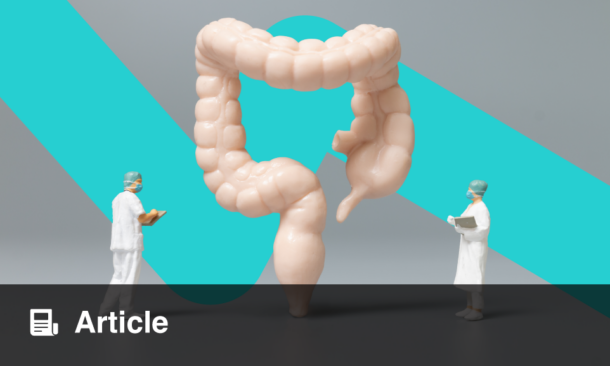‘INGEST the best’ was the theme for the 30th anniversary of the United European Gastroenterology (UEG) Week, which took place in Vienna, Austria, and virtually on 8th–11th October 2022. The event welcomed over 10,000 registrars, with approximately 19% attending virtually. This year’s conference was notable for being the first-ever hybrid UEG week. Attendees came from across the world, with over 113 countries represented, the majority of them in Europe. Helena Cortez-Pinto, UEG President, welcomed all the participants during the Opening Ceremony. Cortez-Pinto encouraged the attendees, especially those who attended virtually, to engage in discussions and access questions via the online platform.
The learning platform was diverse, with a range of live sessions. These included abstract presentations, novel clinical cases, research discussions, and poster exhibitions. With over 2,900 submitted abstracts and over 1,500 posters, there was a lot for everyone to engage with. There were over 430 livestreamed sessions, including a postgraduate teaching programme which kicked off the congress. At the opening ceremony, Cortez-Pinto invited speakers to “five fantastic talks from five fantastic specialists in gastroenterology.” Hana Algül, University of Munich, Germany, presented a talk entitled ‘Pancreatic cancer: will it ever be solved?’. Christoph Sarrazin, Goethe-University Hospital Frankfurt, Germany, covered a session entitled ‘The history of hepatitis C: a book closed, a problem solved.’ Alessandro Repici, Humanitas Research Hospital, Milan, Italy, presented ‘Everything has become resectable: is endoscopy the ultimate solution?’ Séverine Vermeire, University Hospitals Leuven and Katholieke Universiteit (KU) Leuven, Belgium, discussed ‘IBD: ever increasing treatment options and still not solved.’ Finally, Michael Farthing, UEG Lifetime Achievement Awardee 2021, presented ‘What UEG contributed in 30-years and where we are going.’
A selection of prizes were handed out during the opening ceremony, recognising particularly significant contributions in the field. The UEG Research Prize awardee was Neil Henderson, Centre for Inflammation Research, University of Edinburgh, UK, for his project ‘Using integrated single cell genomics and spatial transcriptomics approaches to identify the key therapeutic targets driving the progression of human non-alcoholic steatohepatitis.’ The UEG Lifetime Achievement Award was presented to Michael P. Manns, President and Board Member for Research and Education of Hannover Medical School, Germany, for his outstanding contributions to the field of digestive health and his significant impact on the myUEG Community. The UEG Research Fellowship awardee was Antonio Molinaro, Consultant Hepatologist, Sahlgrenska University Hospital, Gothenburg, Sweden. This award involves UEG giving 50,000 EUR to a researcher to spend 12 months working with a renowned European principal investigator. Laurent Goessens, Department of Gastroenterology and Hepatology, Centre Hospitalier Universitaire UCL Namur, Yvoir, Belgium, received the Journal Best Paper Award. This is a UEG recognition of the best original scientific research published in the UEG Journal in the past year.
Rising Stars, which are selected by the National Societies Committee and the Scientific Committee based on a record of international quality research and developing scientific independence, were awarded to Liseth Rivero Sánchez, University of Barcelona, Spain; Maja Thiele, Odense University Hospital, Denmark; Julien Kirchgesner, Sorbonne Université, Paris, France; Benjamin Mullish, Imperial College Healthcare NHS Trust, London, UK; Gianluca Pellino, Università degli Studi della Campania ‘Luigi Vanvitelli’, Naples, Italy; Salvatore Piano, University of Padova, Padua, Italy; Pedro M. Rodrigues, Donostia University Hospital, San Sebastian, Spain; Fotios Sampaziotis, Cambridge University Hospitals NHS Foundation Trust, UK; David James Tate, University Hospital of Ghent, Belgium; and Tim Vanuytsel, KU Leuven, Belgium.
“We should be incredibly proud of what we, as a community, have achieved,” concluded Cortez-Pinto. Indeed, this was a successful event with a great turnout. The next UEG Week in 2023 will be held in Copenhagen, Denmark.The scientific highlights that follow will illuminate those who were unable to attend UEG Week 2022.
CXCL8 Aids Recruitment and Proliferation of Myeloid-Derived Suppressor Cells
FURTHER research supports the theory that CXCL8 activity helps to recruit myeloid-derived suppressor cells (MDSC) to nerves that have been invaded by pancreatic cancer cells. Carmen Mota Reyes, Klinikum Rechts der Isar, Technische Universität München, Germany, detailed the findings at this year’s UEG Week.
MDSCs are mediators of T cell immunosuppression, which are associated with poor clinical outcomes in patients with solid tumours, including those with pancreatic cancer, and CXCL8 is a known MDSC chemoattractant.
Reyes explained that investigations into 40 patients with pancreatic cancer discovered that MDSCs were in the tumour microenvironment and also the perineural niche of tumour cells. Using RNA sequencing and spatial transcriptomic technology to define the transcriptomic signature of pancreatic cancer with severe neural invasion, the researchers determined the differential gene expression on nerves that had been invaded by tumours and those that had not. The potential invasiveness of pancreatic tumour cells on dorsal root ganglion neurons in the presence of MDSCs was analysed with in vitro migration assays and secretome arrays.
Researchers discovered that patients with pancreatic cancer with severe neural invasion had more intratumoural MDSCs, and that the perineural niche of tumour-invaded nerves had increased MDSC infiltration compared with non-invaded nerves. Furthermore, the migratory behaviour of pancreatic cancer cells towards neurons was enhanced by interacting with MDSCs, which lead to more proliferation of MDSC, and increased CXCL8 and CCL5 secretion.
CXCL8 expression was marked significantly highly in tumour-invaded nerves; however, its expression remained constant on tumour cells. Researchers noted that there was increased chemokine activity and CXCR-chemokine receptor binding after enrichment analysis of bulk RNA sequencing.
Reyes believes that these findings support the theory that CXCL8 activity aids the recruitment of MDSCs to nerves that have been invaded by pancreatic cancer cells.
Turning Up the Heat for Helicobacter pylori
ERADICATION of Helicobacter pylori can reduce the risk of upper gastrointestinal (UGI) ulcer bleeding in aspirin users, according to HEAT, a large-scale trial in UK primary care. The results were shared by Christopher John Hawkey, Simple Trials for Academic Research (STAR) Unit, Nottingham Digestive Diseases Centre, University of Nottingham, UK, at the 30th UEG Week.
HEAT researchers investigated whether H. pylori eradication could reduce UGI ulcer bleeding with aspirin therapy. Between 2012 and 2017, 30,024 patients aged ≥60 years who had been receiving aspirin for a minimum of 4 months were recruited from UK primary care databases. Individuals using proton pump inhibitors, H2 receptor antagonists, and non-steroidal anti-inflammatory drugs were excluded.
The patients took a C13 urea H. pylori breath test. A total of 5,353 had positive tests, and were randomised to receive active eradication treatment (lansoprazole 30 mg, clarithromycin 500 mg, and metronidazole 400 mg twice daily; n=2,677) or matched placebo (n=2,676).
Of the 10% of patients who had an end-of-trial breath test, 90.7% in the treatment group tested negative for H. pylori; however, only 24.0% of the controls did. Furthermore, there were only 18 episodes of UGI ulcer bleeding in the treatment group versus 27 in the control.
Researchers found that, during the first 2.5 years, there were 6 episodes of UGI bleedings in the treatment group compared to 17 in the control group. Furthermore, antiplatelet medication use dropped by 12.7% and 12.3% in the treatment and control groups, respectively; however, an analysis of adjusted medication use during the follow-up remained significant, and use of proton pump inhibitors increased in both groups.
There was no advantage in the treatment group after the first 2.5 years for 22 ulcer bleeds, and there was no benefit for eradication for other clinically significant gastrointestinal bleeding, clinically detected uncomplicated ulcers, or dyspepsia. Unfortunately, 306 patients in the treatment group and 351 in the control group died.
Upadacitinib Effective in Treating Ulcerative Colitis
UPADACITINIB 15 mg or 30 mg is more effective in the treatment of moderately to severely active ulcerative colitis (UC) than placebo, in terms of clinical remission at Week 52. The results of the Phase III U-ACHIEVE study were presented at UEG Week 2022.
Upadacitinib, an oral selective and reversible Janus kinase inhibitor, was shown to be superior to placebo. The multicentre, randomised, double-blind, placebo-controlled study evaluated the safety and efficacy of maintenance upacitinib in patients with UC. The primary endpoint was clinical remission, defined by an adapted Mayo score of ≤2, and secondary endpoints included endoscopic improvement and remission, maintenance of clinical remission, steroid-free clinical remission, and histologic endoscopic mucosal improvement. Participants had achieved clinical response when using 45 mg of upadacitinib once daily following 8 weeks of induction therapy. They were randomised to receive placebo, upadacitinib 15 mg, or upadacitinib 30 mg. At Week 52, the number of patients who achieved clinical remission was significantly higher in those treated with upadacitinib 15 mg and 30 mg (40.4% and 53.6%, respectively), compared to those who received placebo (10.8%). Those who received upadacitinib were also more likely to achieve the secondary endpoints. Furthermore, those who received the treatment showed reductions in bowel urgency.
Regarding safety, 9.4% of patients taking placebo experienced a serious adverse event, compared to 8.4% with upadacitinib 15 mg and 30 mg. This led to treatment discontinuation in 10.2% of the placebo group, 4.0% of the upadicitinib 15 mg group, and 7.2% of those taking upadacitinib 30 mg. Other adverse events included worsening UC, which occurred in 30.0% of those receiving placebo and 11.6% of those receiving 15 g of upadacitinib. In those receiving 30 mg, the most common adverse event was nasopharyngitis (10.4%). Furthermore, 3.6% of patients on 15 mg, 2.8% of those on 30 mg, and 3.3% of those on placebo reported serious infections. In those taking upadacitinib 15 mg and 30 mg, thromboembolic events were reported in two patients for each group, as well as herpes zoster in 4.8% and 5.6%, respectively. Finally, one patient from the placebo group and from the 15 mg group, and two patients from the 30 mg group reported malignancies, excluding non-melanoma skin cancer; and one patient in the placebo group and the 30 mg group reported major adverse cardiovascular events.
Immune Checkpoint Blockade Leads to Longitudinal Changes in Gut Microbiome
NEW data following a study that explored the dynamics of the gut microbiome during immune checkpoint blockade (ICB) shows longitudinal changes in the gut microbiome in response to the treatment.
By profiling the longitudinal gut microbiome of patients with advanced cancer, pharmacomicrobiomic interactions associated with the increased success of ICB could be better understood. The study analysed the gut microbiome of 75 patients affected by advanced melanoma, who were undergoing ICB. The researchers performed shotgun metagenomic sequencing on stool samples in order to compare the microbiome before and during treatment, as well as to explore its correlation with treatment success, which was measured through 12-month progression-free survival. Through a regression model, researchers estimated the changes in metabolic pathways and bacterial species, and disentangled the longitudinal effects of these factors.
Researchers also analysed the effects of treatment characteristics, such as the differences between patients who responded to single or combination ICB; patients who experienced immune-related adverse events such as colitis; and patients with prior exposure to antibiotics or proton pump inhibitors.
The findings showed that patients who did not respond to ICB experienced a greater loss of diversity compared to those who did respond. They also confirmed that the microbial biomarkers that were found at baseline increased longitudinally during treatment. The researchers found higher and increasing abundances of Actinomycetaceae and Lachnospiraceae in those who responded to single ICB treatment, and of several Bacteroides species in those receiving combination ICB. Furthermore, there were higher abundances of Roseburia faecis, R. lactaris, and Coprococcus after the last treatment injection in those who responded to both ICB regiments compared to non-responders. In those who were affected by colitis and received both regiments, three Clostridia species were found to be increased; however, those who did not develop colitis and responded to single ICB showed more F. prausnitzii, Bifidobacterium bifidum, and K. pneumonia; and those who received combination ICB had more Bacteroides caccae, R. lactaris, and Parasutterella excrementihominis.
The results show that the design of microbiome-based interventions should not rely solely on baseline predictive biomarkers, in order to increase their efficacy. Furthermore, the study identified species biomarkers which clinicians could use to monitor patients who are receiving immunotherapy, and to monitor the development of colitis.
Type 1 Diabetes Complications Linked to Alterations in Gut Microbiota
A STUDY conducted in the Netherlands has discovered that patients with long-term Type 1 diabetes (T1D) have altered gut microbiota in comparison to the general population. These changes, in both composition and function, are linked to the characteristics and vascular complications of T1D. The study’s findings also suggest that a dysbiotic gut microbiome could be a contributor to the disease progression of T1D.
Researchers carried out metagenomic sequencing using stool samples, in order to pinpoint the characteristics of gut microbiota. The sample size was 239 patients, all of whom had longstanding T1D. These patients were compared to a control cohort, including 2,937 age-, sex-, and BMI-matched subjects, none of whom reported any serious or chronic diseases.
No difference in α-diversity was discovered between cohorts. However, 82 bacterial taxa were found to be significantly altered in patients with T1D. Of these, 37 were enriched, including with Clostridiales and Oscillibacter pathogens; and 43 were depleted, including Alistipes, Dorea, and Bifidobacterium. A multivariate analysis of variance and logistic regression allowed researchers to discover that multiple phenotypes related to diabetes were associated with microbiota composition, biochemical functions, and individual microbial species.
Diabetic nephropathy was linked to variations in nine taxa, including bacterial increases from the order Clostridiales, and alterations in 29 microbial pathways, including increases in pathways involved in bacterial cell membrane biosynthesis, and reduced lipid metabolism. Lower effects were found with other comparable results, including Hb1Ac, diabetic retinopathy, and micro- and macrovascular complications.
Novel System Finds Potentially Avoidable Cases of Pancreatic Cancer
A NOVEL system, which uses cross-sectional imaging, has identified previously missed instances of pancreatic cancer. These cases may have been avoidable, and led to poorer clinical outcomes, as there is only a brief period of time when curative surgery can be carried out.
In this first detailed analysis, which aimed to establish a plausible explanation for cases of potentially missed pancreatic cancer on imaging, researchers discovered that missed opportunities to avoid instances of post-imaging pancreatic cancer were identified in 36% of cases.
Electronic records of 600 patients, who were diagnosed with pancreatic cancer between 2019–2021 at two National Health Service (NHS) sites in the UK, were explored. Post-imaging pancreatic cancer was characterised as a pancreatic cancer diagnosed between 3–18 months following either abdominal computed tomography or magnetic resonance imaging, which did not diagnose pancreatic cancer. The cross-sectional imagining, which did not diagnose the cancer, and later diagnostic imaging, which did, were independently reviewed. Researchers created an algorithm to categorise post-imaging pancreatic cancer, and to identify the most fitting reason for the cancer being missed.
Post-imaging was categorised in the following way: Type 1 as a missed pancreatic cancer lesion, and imaging proved inadequate to exclude the lesion (10.6%); Type 2 as a missed pancreatic cancer lesion because of perceptual error, which was detected on later scans (25.5%); Type 3 as a pancreatic cancer abnormality detected, for instance, pancreatic or bile duct dilatation without focal lesion, but without a follow-up plan for management of disease (10.6%); Type 4 as a pancreatic cancer-associated lesion located, with adequate follow-up management (12.8%); and Type 5 as a new pancreatic cancer lesion with no abnormality, which was detected on initial imaging, and with adequate imaging to exclude a lesion (40.4%).
Of the 600 reviewed cases in the study, 46 (7.7%) were categorised as post-imaging pancreatic cancer, from CT (n=32) and MRI scans (n=4). Seven CT scans were without contrast. To conclude, 26% of patients were found to have imaging signs of pancreatic cancer which were investigated further following review. Thirty-six percent of cases were considered to be potentially avoidable, a figure which calls attention to the frequency of missed opportunities in clinical settings.
Researchers believe that using this analysis system has the ability to standardise the investigation of post-imaging pancreatic cancer, and also to improve the outcomes for patients diagnosed with pancreatic cancer.
Artificial Intelligence to Predict Abdominal Pain in Children
ABDOMINAL pain is a common complaint in childhood, with prevalence rates ranging from 0.3% to 19.0%. Although various risk factors have been reported, additional studies are necessary to determine which of these play a more significant role. A presentation at UEG Week 2022 spotlighted findings from a study that employed artificial intelligence (AI) models to predict clinical outcomes and help delineate the main factors involved in abdominal pain in children.
Researchers examined the records of 1,274 children with abdominal pain in the Born in Bradford birth cohort, and assessed the frequencies of comorbidities associated with the condition. These were compared with the records of children in the same cohort without abdominal pain who experienced one of the associated comorbidities. The children’s mothers were also included.
The Cox proportional hazards model was used to analyse the relationship between the risk factors and abdominal pain in children. Allergic diseases, such as asthma, hay fever, urticaria, and eczema, were significant protective factors for children’s abdominal pain. Conversely, mothers’ abdominal pain was shown to be a significant risk factor (hazard ratio: 1.33; 95% confidence interval [CI]: 1.17–1.50; p<0.001).
Three AI models were created based on the variables used in the Cox model. Model 1 included 40 clinical features from children and their mothers, Model 2 excluded children’s allergic diseases, and Model 3 included only children’s clinical features. Model 1 (area under the curve [AUC]: 0.84; 95% CI: 0.82–0.87) was found to outperform Model 2 (AUC: 0.65; 95% CI: 0.61–0.68; p<0.001). Further comparison found that that the performance of Model 1 was similar to that of Model 3 (AUC: 0.83; 95% CI: 0.80–0.86; p=0.164). Feature importance of Model 1 highlighted that allergic comorbidities of children, chiefly eczema, primarily contributed to the model.
Ultimately, this research could aid the diagnosis of abdominal pain in children. Going forward, a more detailed clinical picture input might improve prediction.
Findings from GI-COVID-19 Presented at UEG WEEK 2022
RESULTS from GI-COVID-19 were shared at UEG Week 2022, which took place in Vienna, Austria, between 8th–11th October. This prospective, multicentre study investigated the prevalence of gastrointestinal (GI) symptoms and post-infection disorders of gut–brain interaction up to 12 months after hospitalisation with COVID-19, as well as factors associated with their occurrence.
Patients with and without a diagnosis of COVID-19 were recruited at hospital admission and asked for GI symptoms after 1, 6, and 12 months, using the validated Gastrointestinal Symptoms Rating Scale (GSRS), the Rome IV Diagnostic Questionnaire to screen for functional GI disorders in adults, and the Hospital Anxiety and Depression Scale (HADS).
The study included patients from 36 centres across 12 countries. In total, 883 patients (614 who tested positive for COVID-19 and 269 controls) were included for the primary analysis. Of these, 435 with COVID-19 and 188 controls completed the 12 month follow-up. At enrolment, GI symptoms occurred more frequently in patients with COVID-19 (59.3%) than in the control group (39.7%) (p<0.001). Individuals with COVID-19 reported a higher presence of nausea, diarrhoea, loose stools, and urgency compared to controls.
At 1-month follow-up, nausea and acid regurgitation were significantly more prevalent in patients with COVID-19 compared to the control group (8.7% versus 1.7%; p=0.015 and 8.4% versus 2.1%; p=0.006, respectively). At the 6-month evaluation, those with COVID-19 reported lower rates of flatus, constipation, and hard stools relative to the controls. At 12 months, constipation and hard stools were significantly less prevalent in people with COVID-19 than in the controls (9.6% versus 16%; p=0.019 and 10.9% versus 17.7%; p=0.011, respectively).
During follow-up, disorders of the gut–brain interaction were more frequently reported by patients with COVID-19. Of note, statistically significant differences were found only for irritable bowel syndrome according to Rome III and Rome IV criteria. Factors significantly associated with irritable bowel syndrome diagnosis were anamnestic allergies, chronic intake of proton pump inhibitors, and dyspnoea.
Does Colonoscopy Screening Reduce Incidence of Colorectal Cancer?
PERFORMING one colonoscopy screening reduces the incidence of colorectal cancer (CRC) over 10 years, according to data presented at UEG Week 2022. This trial was performed due to the lack of randomised trials to assess the benefits of screening for colorectal cancer through colonoscopy.
The NordICC trial included participants aged 55–64 years in Norway, Sweden, and Poland, who were randomised to a standard-of-care with no screening (56,365 participants) or a colonoscopy (28,220 participants). The incidence and mortality of CRC were assessed after 10 years, adjusted for screening participation. Screening attendance was 42.0%, and there were no perforations or screening-related deaths following the 30 days after the procedure. Fifteen patients experienced bleeding after polyp removal.
The median follow-up was 10 years, during which 622 CRCs were diagnosed in the no screening group, versus 259 in the screening group. The incidence of CRC was 1.20% in the no-screening group, compared to 0.98% in the screening group, leading to a risk reduction of 18% (risk ratio [RR]: 0.82; 95% confidence interval [CI]: 0.70–0.93). Furthermore, CRC mortality in the no screening group was 0.31%, versus 0.28% in the screening group (RR: 0.90; 95% CI: 0.64–1.16).
To prevent one CRC, the number of invitations to screening required was 455 (95% CI: 270–1,429). CRC incidence and mortality were reduced from 1.22% to 0.84% (RR: 0.69; 95% CI: 0.27–0.77), and from 0.3% to 0.15% (RR: 0.50; 95% CI: 0.27–0.77), respectively. All-cause mortality was the same in both groups (11.04% in the no screening group versus 11.03% in the screening group).
Post-Endoscopic Submucosal Dissection Oesophageal Stricture Prevention: Oral Prednisolone versus Local Triamcinolone Injection
PHASE III multi-institutional, open label randomised controlled trial (JCOG1217) data has revealed that administration of oral prednisolone following endoscopic submucosal dissection (ESD) is not superior in preventing oesophageal stricture development when compared to local triamcinolone injection (LTI) administration.
LTI is the current standard practice for prevention of oesophageal stricture following ESD; however, there is the risk of serious adverse events as well as technical difficulties associated with the procedure. Although steroids have their own associated side effects and adverse events, oral prednisolone administration (OPA) has been considered as an alternative to LTI because no specialist skill is required.
Researchers from the Gastrointestinal Endoscopy Study Group of the Japan Clinical Oncology Group trial sought to assess whether OPA conferred benefits compared to LTI in preventing post-ESD oesophageal stricture, measured by stricture-free survival (SFS). SFS was defined as need for endoscopic balloon dilation, dysphagia score ≥2, and inability to pass standard endoscope, or death.
Between September 2014–November 2020, the team enrolled 281 patients aged between 20–85 years of age with a histologically confirmed diagnosis of thoracic oesophageal squamous cell carcinoma (Tumour in-situ or T1a staging and primary lesion covering ≥50% of the luminal circumference).
Candidates were randomised on a 1:1 basis to either LTI (n=141) or OPA (n=140). Of these 281 patients, 272 underwent ESD followed by either LTI or OPA. Those in the OPA arm received an 8-week tapering course of oral prednisolone, starting at 30 mg/day on Day 3 post-ESD. Those in the LTI arm received a one-off 100 mg triamcinolone injection directly after ESD.
SFS at 12 weeks was 94.8% (95% confidence interval [CI]: 89.4–97.5) in the OPA arm and 88.5% (95% CI: 81.6–92.9) in the LTI arm. The hazard ratio was 0.672; 90% CI: 0.361–1.250; one-sided p=0.1444, showing no superiority in using OPA versus LTI. No significant difference in endoscopic balloon dilation rates or adverse events were seen between the two arms, and there were no treatment-related deaths. Hyperglycaemia and hypertension were seen in both arms and there were three instances of delayed perforation in the LTI arm. Overall, the findings showed that OPA was not superior to LTI in preventing post-ESD oesophageal stricture.









